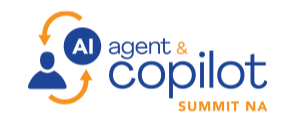
The world’s two largest enterprise-apps vendors are rapidly redeploying to a new battleground focused on AI and data clouds as their respective $40-billion applications portfolios transition from top strategic priority to an essential but nevertheless subservient component in the AI-data food chain.
As the business world recognizes that AI will be not only a disruptive force but also the new central nervous system for the global economy, business leaders are racing to ensure their organizations have the data assets, access, capabilities, and skills to power their AI initiatives and visions.
And that’s why SAP and Salesforce have become zealous evangelists for data clouds, which in their telling transcend databases, customer data platforms, data warehouses and data lakes and data lakehouses (not to mention the sure-to-come data seaside cottages and data riverfront condos), and every other traditional thingamajig used to hold and manage data.
That fundamental rewiring of the global economy toward AI-driven outcomes is also why:
- Salesforce last week disclosed that it intends to acquire data-management specialist Informatica for $8 billion in a deal that is expected to close in February or March; and
- SAP in February forged a sweeping partnership with data-engineering powerhouse Databricks as SAP introduced its Business Data Cloud.
So, it is perhaps ironic that these two superb software companies that come from such wildly different backgrounds and that have taken completely dissimilar journeys to reach this point, now find themselves racing toward the new imperatives of AI and data clouds.

AI Agent & Copilot Summit is an AI-first event to define opportunities, impact, and outcomes with Microsoft Copilot and agents. Building on its 2025 success, the 2026 event takes place March 17-19 in San Diego. Get more details.
Wildly Different Histories
Think about it: SAP was founded by several German employees of IBM more than 50 years ago and rose to fame and fortune by creating enterprise apps that would run on mainframes and other large systems. By contrast — and that’s putting it mildly — Salesforce came to life in San Francisco about 25 years ago with the fervent commitment to turn the cloud from an academic concept into a global phenomenon.
Both have succeeded beyond even their founders’ wildest dreams, with each having annualized revenue of pretty much exactly $40 billion, hundreds of thousands of customers, and incredible influence over and impact on the global economy.
And in spite of all that success, neither Salesforce nor SAP can outrun what is perhaps the ultimate truth for the Cloud Wars Top 10 companies: what got you here will not take you there. The inexorable forces of innovation and acceleration and competition and human ingenuity will initially hamstring and ultimately crush any tech business that is arrogant enough and daffy enough to believe that it can somehow simply keep doing what it’s been doing and the rest of the world will just keep forking over gobs of cash.
The New Reality, and The New Imperative
So, both Marc Benioff of Salesforce and Christian Klein of SAP are unswervingly steering their companies toward those new and intimaely intertwined objectives of AI and data clouds, recognizing that the applications that drove their companies to global prominence must now become supporting players in the AI Era. And here are some of the key steps both Benioff and Klein are taking:
The ascendancy of AI. While it’s become fashionable for tech companies to emphasize that they’ve been seriously focused on AI since the invention of the wheel, almost all have until recently viewed AI as an under-the-hood turbocharger rather than as The Big Thing that graces the showroom and drives customers’ buying decisions. That has forever changed.
The primacy of data. We’ve all heard it and said it plenty of times: You can’t have an AI strategy without a data strategy. And the current state of the tech world — particularly in relation to what most customers can handle at this point in their technology evolutions — means that data clouds are the optimal way to consolidate, govern, manage, enhance, and leverage their data.
The power of partners — specifically, data partners. No doubt, both SAP and Salesforce will claim its data cloud is the most open and that its data ecosystem is the biggest and the best. The important thing will be for customers to be able to evaluate those rosters of partners and determine which is more suitable for the specific desires of those customers.
The rise of agents. Benioff is pushing Agentforce as aggressively — no, wait, let me rephrase that — more aggressively than anything I’ve seen him evangelize in his quarter-century of unmatched public advocacy. Klein used much of last month’s Sapphire event to showcase a bold future of intelligent applications completely reinvigorated by agents that drive productivity, insights, and growth.
The redefining of the role of applications. While both Benioff and Klein have scoffed (Benioff quite viscerally, Klein more subtly) at the prediction by Microsoft CEO Satya Nadella that agents will trigger the “collapse” of enterprise apps, Benioff and Klein have also been incredibly bullish on the impact agents will have provided those agents have superb data with which to work. Ergo, the role of apps will be to spin out data that is no longer the end in itself — e.g., what were our sales last week? — but instead becomes the fuel for creating the future: e.g., given the global demand signals, how should we deploy our people and allocate our inventory and focus our marketing budget?
Final Thought
Forgive my sentimentality, but this is a truly remarkable time to be alive, isn’t it? Because what we see in this new framing of the decades-old competition between SAP and Salesforce is not so much the intramural grapplings of two giant tech companies but rather free-market forces creating the opportunity for business leaders in every industry to truly re-imagine a future in which just about anything is possible.
I have no doubt that Salesforce and SAP will do their parts in providing superb tools for business leaders to deploy as they set out on their future-creating endeavors.
But, it’s completely up to those business leaders to understand that if they want those big-time dreams to come true, then those leaders must realize that all limitations are self-imposed.
Time to dream big.











